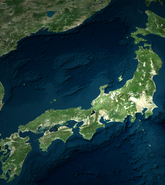Singapore - October 29, 2018 RMS, a leading global risk modeling and analytics firm, has developed a list of ten ‘one in 100 year’ catastrophes that could hit the Asia Pacific region. While in 2018 the region has been assailed by several disasters, such as the Palu earthquake in Indonesia, or Typhoon Jebi hitting Japan, at a national scale we can expect even more destructive events at the 1% level of annual probability.
In creating this list RMS has endeavoured to identify events which are not simply replications of events that we have already seen, but also more unusual events that nonetheless have the potential to be particularly devastating, some precisely because they are not being prepared for. The Asia-Pacific region is a vast area including the Pacific Ring of Fire, the Indian Ocean – Asia plate collision zone as well as including the largest concentration of tropical cyclones.
The list is not in any particular order and focuses only on single events rather than event combinations, balanced among some of the principal countries in the region.
Ten ‘one in 100 year’ catastrophes that might affect the Asia Pacific region:
- New Zealand. An Mw7.5 earthquake is a direct hit on the city of Wellington and is accompanied by massive liquefaction in the roads and harbour reclaimed from the sea, as well as some localized changes in coastal land levels. Over the past decade the earthquakes that so battered Christchurch have been migrating towards the nation's capital.
- South Korea. A succession of stalled depressions cause very widespread river flooding, in particular affecting the city of Seoul. While the city has spent money on multiple flood defences, these are overwhelmed by the water levels.
- China. An M7.8 earthquake occurs in Hebei Province 200km south of the capital, between the cities of Baoding and Shijiazhuang, leading to widespread destruction, and tens of thousands of casualties.
- Philippines. An intense typhoon that passes south of Luzon makes a near direct hit on Manila at Cat 4, causing extraordinary damages. The city has dodged several recent intense typhoons.
- Indonesia. A massive eruption at the volcano on Lombok, up to 6 on the Volcanic Eruption Intensity (VEI) scale, triggered by the recent earthquakes. The eruption covers Lombok and Bali with a twenty centimetre plus layer of volcanic ash, causing roofs to collapse, killing agricultural crops and closing the tourist industry.
- Australia. A transitioning cyclone, comparable to the 1938 hurricane in the NE US, makes direct landfall on the city of Perth at Cat 3 intensity, bringing intense rainfall and damaging winds.
- Japan. A magnitude 6.9 earthquake occurring on the Uemachi Fault to the southeast of the city of Osaka, causing much damage and many casualties in Suita City.
- India. Extensive ‘100 year’ flooding of the greater Mumbai area, allied with extensive wind damage, caused by a Cat 4 Cyclone making landfall and stalling close to the city.
- Taiwan. A shallow Magnitude 6.7 earthquake on the Shanchiao Fault next to the city of Taipei causing huge destruction as well as coastal flooding from tectonic subsidence.
- Thailand. A Cat 3 typhoon taking an unusual westerly path, enters the Gulf of Thailand, and makes landfall close to Bangkok. The combination of the shallow-water storm surge and the intense rainfall, allied with long-term land subsidence from water extraction, sends the whole of Bangkok underwater.
Robert Muir-Wood, Chief Research Officer, RMS, said: “Asia Pacific has always been important to RMS. We picked this list of events to reflect credible catastrophes, not so extreme as to be beyond the concerns of the insurance sector. These are the kinds of events for which nations should also be managing their disaster risk reduction strategies. As we develop large stochastic simulations in catastrophe loss models, we discover a very large number of potential extreme events. This list should be considered illustrative and by no means exclusive. From major earthquakes in New Zealand, Sumatra or Japan, to flooding in India and Korea, or volcanic eruption shrouding Bali in ash; any one of these catastrophic events would have major implications for the region, country, people and insurance industry.”





